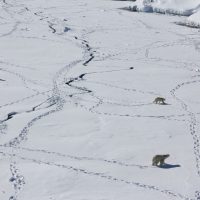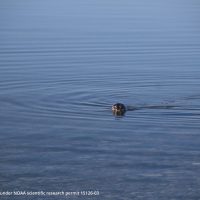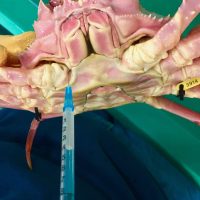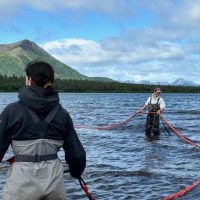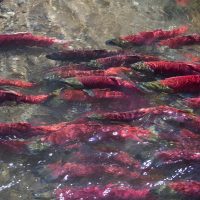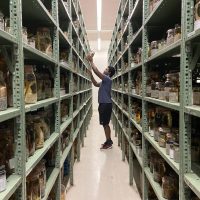Filter Results
Chelsea Wood reveals ‘everything you (n)ever wanted to know’ about parasites in new children’s book
Chelsea Wood, SAFS Associate Professor, has an upcoming children’s book titled “Power to the Parasites! Everything You (N)ever Wanted to Know About the Creepy Crawlies Hidden in Your Home, Your Food, Your Pets – and Maybe Even in You!” The book introduces kids to the world of parasitism.
Read moreWetland Ecosystem Team working with Long Live the Kings on habitat restoration project
In a new blog by Long Live the Kings, they explore the preliminary findings of post-restoration monitoring undertaken by the UW Wetland Ecosystem Team at a habitat restoration project at Vigor Shipyards, which was completed in the Spring of 2023.
Read morePaws of polar bears sustaining ice-related injuries in a warming Arctic
Polar bears in some parts of the high Arctic are developing ice buildup and related injuries to their feet, apparently due to changing sea ice conditions in a warming Arctic. While surveying the health of two polar bear populations, researchers led by Kristin Laidre from UW SAFS, found lacerations, hair loss, ice buildup and skin ulcerations primarily affecting the feet of adult bears as well as other parts of the body.
Read moreHarbor seals and fish parasites: How two undergrads contributed to major discoveries in cryptic diversity
Taking the AERA class as part of the Alaska Salmon Program was a pivotal moment for two undergrads, who went on to contribute to major discoveries in cryptic diversity in two vastly different species: harbor seals and fish parasites.
Read moreBitter crabs…attitude problem or parasitic infection?
Bitter crab syndrome might sound like an attitude problem, but it’s actually a condition faced by two very valuable fisheries in Alaska: snow crabs and Tanner crabs. So-called for the bitter flavor of crab meat in infected crabs, bitter crab syndrome (BCS) is caused by a parasitic dinoflagellate of the genus Hematodinium and infects a number of crustacean species around the globe. We spoke to SAFS grad student, Aspen Coyle, about her research.
Read moreCommunity and connection with the Alaska Salmon Program
It’s not all work while visiting the Alaska Salmon Program camps for the summer field season. Students head up to southwest Alaska, some for over three months, and downtime is a chance to explore, connect with their peers, and experience living in a field camp.
Read moreClicks not bricks: A global assessment of the online trade of ornamental crayfish
They may be small, but crayfish are mighty in other ways, one of them being invasive risk in areas where they are not natively found. Crayfish are increasingly being traded online for ornamental purposes, such as aquariums, and in a new study led by SAFS Professor Julian Olden, the first ever global assessment of the online trade in and associated invasion risk of freshwater crayfishes was conducted.
Read moreReflections on Tribal Fisheries and Co-Management 50 years after the Boldt Decision: Bevan Symposium
SAFS annually hosts the “Bevan Seminar on Sustainable Fisheries” funded by gifts from the Bevan family, and contributions from NOAA Fisheries and SAFS. This year, we will hold a one-day symposium on Thursday November 21, 2024, centered on Tribal voices, reflecting on the past 50 years and considering what the future of Washington fisheries will look like over the next 50 years.
Read moreUncovering parasites in one of the world’s largest fish collections
Housed in a set of World War II artillery bunkers on the outskirts of New Orleans is a surprising, and gargantuan, fish collection. Home to the largest collection of post-larval fish specimens in the world – 7 million to be precise – the Royal D. Suttkus Fish Collection at the Tulane University Biodiversity Research Institute (TUBRI) was the destination for a group of UW researchers over the summer.
Read moreStudents get their hands dirty studying marine biology on Yellow Island, led by SAFS graduate student
Chris Mantegna, a third-year graduate student at SAFS, has spent the past three summers mentoring undergrads on on Yellow Island, a pristine 11-acre nature preserve in Washington’s San Juan Islands.
Read more

